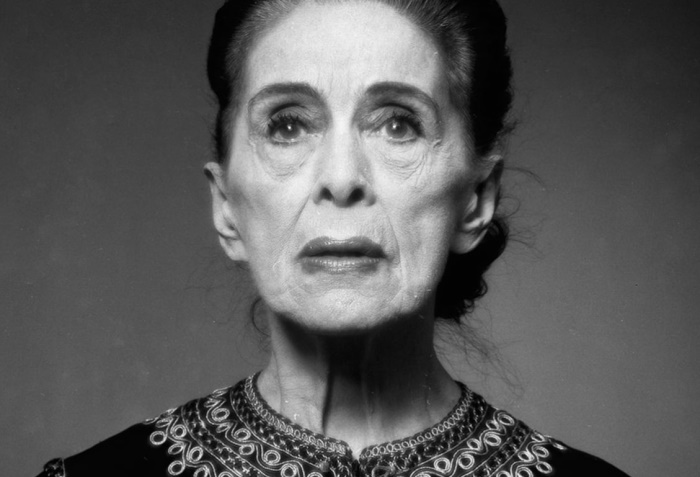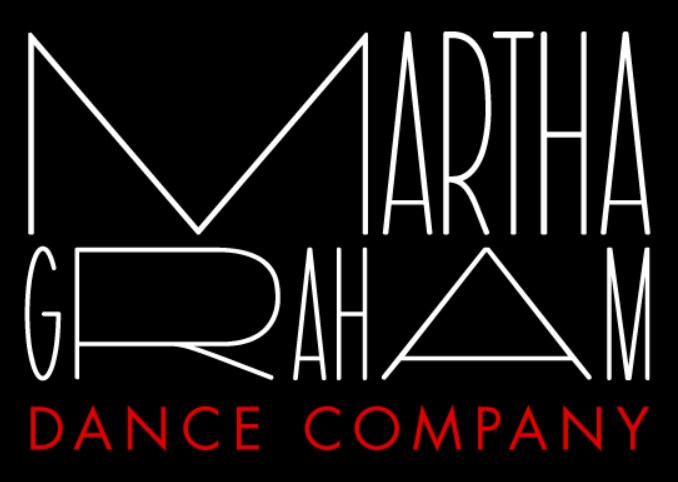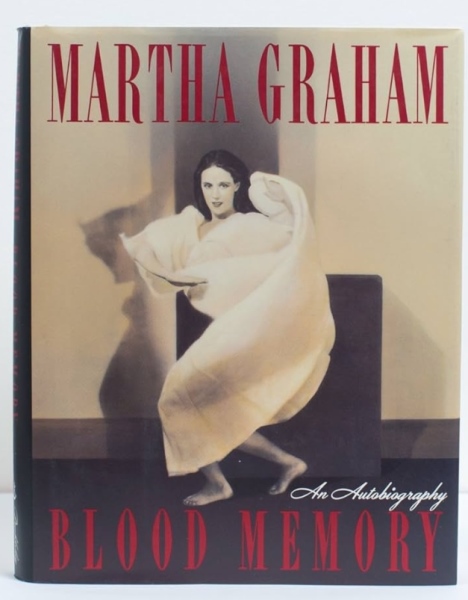Named as a significant influence in the arts alongside Stravinsky, Picasso, Frank Lloyd Wright, and James Joyce, Martha Graham lived up to the titles given to her by the press and the media.
She is an iconic ballerina with 181 creations and an innovative technique that dancers from all over the world practice and follow. Her existence itself is a legacy of the United States.
Table of Contents
Martha Graham’s Biography
- Birth Name: Martha Graham
- Nationality: America
- Born: May 11th, 1894
- Died: April 1st, 1991
- Parents: George Graham (father, psychiatry practitioner) & Jane Beers Graham
- Siblings: Three siblings – Mary, Geordie, and William
- Spouse: Erick Hawkins (m. 1948 – 1954)
- Children: N/A
- Height: 5 feet 3 inches (~160 cm)
- Weight: 102 pounds (~46 kg)
Early Life & Education
Martha Graham was the oldest child of Doctor George Graham (equal to a psychiatry practitioner during his time).
The doctor specialized in disorders of nerves and thus held a deep interest in human behaviors and how they could be conveyed through bodily movements. It is said that his idea was an inspiration for little Martha.

While the Grahams could guarantee a comfortable life for their children, dancing wasn’t what they encouraged. Therefore, it was not until Martha reached seventeen years old and moved to California with the family did she get to watch the first live performance of her life.
Inspired by the artistry of Ruth St. Denis, young Martha enrolled in the senior’s co-founded Denishawn School of Dancing & Related Arts and stayed with them until she was nearly thirty and ready to pursue a professional career.
Eight years at Denishawn witnessed immense improvement in Graham in both technical and emotional aspects. The dance Shawn created for Graham only – Xochital – earned her the very first critical acclaim of her career.
The Way To Become A Professional Ballerina
Early Career
After leaving Denishawn, Martha Graham joined the Greenwich Village Follies.
During her two-year stay with them, she was constantly pushed by the urge to establish human orientalism and experience as the essence of dancing instead of treating it as entertainment.
Therefore, with so much courage, Graham left the decorative aspect of ballet movements that she had trained at Denishawn and focused on the foundation.
She wanted to be something bigger, so much so that the independence in art and economy at Greenwich Village Follies was no longer tempting enough.
In 1925, Graham was recruited for the Eastman School of Music and co-produced The Flute of Krishna, a color motion picture film, with Rouben Mamoulian.
Eventually, the head of the school entrusted her with its entire program and never interfered with her classes.
Could there be a better opportunity for Graham to experiment and break the limits? Acknowledging the situation, she picked out the best students and taught them the revolutionary techniques she had harbored in mind for so long.
Not so long after, Graham opted to leave along with Mamoulian despite the suggestion to stay.
Check more: Margot Fonteyn Ballerina: Biography, Height, Weight, Cause of Death
Independent Company
After Eastman, Martha Graham established the Center of Contemporary Dance under her name and started with a humble studio in the UES, New York.
Her activities during this time were mainly to prepare for an independent concert on April 18th, 1926: giving classes, dancing for the Radio City Music Hall, or modeling furs.
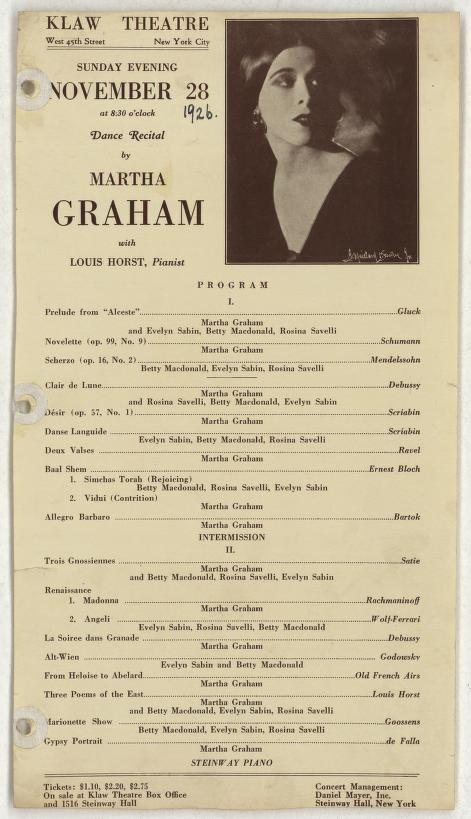
No matter what happened, her heart was fixed on the new style and method of dancing she had always wanted to create.
At the 48th Street Theatre, Graham performed 18 solos and trios choreographed by herself. Without a doubt, these pieces were so Graham: raw, unabashed, and audacious in terms of expression.
Later in the same year, Graham and the troupe performed at the Klaw Theatre, and she secured a long-term collaboration with Soichi Sunami, a pictorialist photographer known for creating impressive portraits of significant modern dancers.
Within the next five years, this collaboration had given birth to some iconic pictures that expressed the essence of modern dance.
In 1928, Graham claimed a position in the faculty of the Neighborhood Playhouse School of the Theatre.
Three years after her first concert, Martha Graham completed her first group piece, Heretic. The sharp and constricted movements executed by dancers in simple clothes marked Graham’s first steps to stray away from the aesthetic and extravagant styles she learned and knew of.
Walking on this path with Graham were Isamu Noguchi and Aaron Copland, whose creativity truly matched Graham’s interpretation and choreography of Greek and American mythology. A few notable examples are Appalachian Spring, Cave of Heart, and Night Journey.
A New Era of Dance
The 1930s and 1940s became the biggest era in Graham’s life as her reputation and flair put her in the current political scene then, despite her infamous claim to have no such attachments to the matters.
Graham’s 1936 creation of Chronicle is believed to stem from The Spanish Civil War and The Great Depression. Both the costumes and the sets adopted dark colors to commend isolation and depression.
Also in this year, Graham made the well-known decision to reject the invitation to partake in the 1936 Summer Olympics because many of her idolized artists were mistreated and she didn’t feel like the invitation would wrongly identify herself.
She stood by this decision despite Joseph Goebbels having written another letter to her.
As a response to the 1936 Olympics, Graham came up with her famous American Document (1938). It was directly related to life with extremely American characteristics and ideals.
This work paved the way for Graham to be the first dancer who had the pleasure of performing at the White House as well as the recipient of presidential honors.
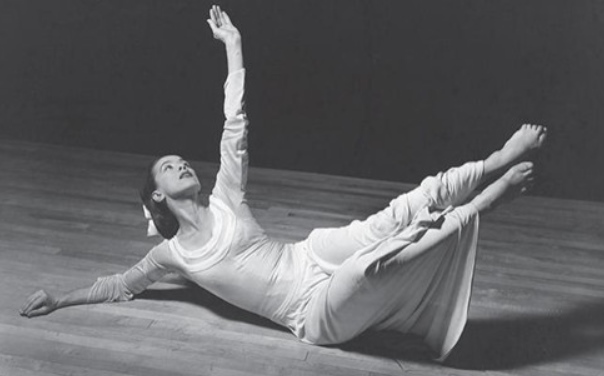
A Rising Star in Modern Dance
Though often used interchangeably with lyrical dance or contemporary dance, modern dance has its distinctive area. The keys of modern dance are improvisation and expression, inspired by various dance styles and personal philosophies.
Early critics considered Graham’s dances “ugly”, and Graham responded with action and proof, showing that ugliness by common concept can become spectacular and memorable if it is voiced and cried out with power.
One interesting myth about Martha Graham is that she wasn’t too enthusiastic about recording her dances, firmly believing live performances belonged to the stage only. She only allowed recording much later to recreate and archive certain content that shouldn’t be lost.
Martha Graham wasn’t the first ballerina and dancer to rebel against the guidelines and motions that had been standardized for so long. Yet she managed to make the first move in redefining modern dance with a unique approach: The Graham Technique.
Contribution To Ballet
Everyone knows how rich the repertoire Martha Graham created is. But it takes a bit of attentiveness to notice the sources of inspiration for her work: native religious ceremonies, Greek mythology, modern painting, American frontiers, and more.
Frontier (1935) was one of the first works by Martha Graham’s company. It was also the bridge for Graham to meet and collaborate with sculptor Isamu Noguchi and sound designer Louis Horst – two artists and friends with a prominent influence on Graham.
American Document was a great milestone in Graham’s career when the art of performing became one with dance and literature. The awareness of time and place in the artist as well as the technique Graham had been completing made her the pillar of the revolution named “modern dance”.
As World War II approached its end, Graham took inspiration from the frontier region of America and depicted the concept of hope in Appalachian Spring for all people who wanted to move on from the war.
After the breakup with her husband Erick Hawkins, Graham dedicated everything she had to the stage and came up with Seraphic Dialogue, an extremely well-known work in her legacy.
Although she had retired when the work premiered, one could still feel her power in the dancers and behind the story.
Another remarkable work by Graham was Night Journey (1948), which brought the story of Jocasta and Oedipus onto the stage. The story focused on Jocasta as she relived the tragic events in her life and attempted to justify what she had done.
It would be a shame to not mention Clytemnestra (1958), the only full-length creation in Martha’s repertoire. The work, based on Queen Clytemnestra and King Agamemnon, was considered a modernistic masterpiece of America in the 20th century.
If there is something in common with all these works, it will be the way Martha Graham went against traditional perceptions. Instead of deliberate and graceful movements, she dared to disjoint, tremble, and express the rawest emotions that a human can exude.
Even after retiring from the stage, she didn’t stop teaching and choreographing for young dancers until her last breath.
Graham Technique
The Martha Graham Technique is widely acknowledged as a crucial concept in modern dance, not only in America. Graham Technique is said to provide qualities in expression and drama as well as intense, distinctive, and powerful floorwork.
The foundation of this technique is the breathing cycle of a human, in which release and contraction create opposition. Many forms of modern dance have adopted this trademark.
A principle dominating the technique says the spine is the axis and the torso “spirals” around it. Consequently, when you find and control the center of gravity in your body, you can time and direct your fall for that jaw-dropping moment.
Dancers trained by Graham are skilled in utilizing their weight for the tension and highlighting that effort. So, it is technically different from traditional ballet dancers who aim to look like they are soaring in the air.
Martha Graham was always on the next level of flexibility even when compared to trained dancers. Hence, her innate gift plus large and powerful moves might be very painful and challenging to master.
Nevertheless, because of her long-term collaboration with Frederick Hawkins, his balletic techniques influenced hers to a certain extent.
Today, you can find the Graham Technique in the dance programs of most universities. All professional dancers are familiar with the principles of the technique, as it has even inspired and affected codified techniques of renowned names like Merce Cunningham and Paul Taylor.
Martha Graham Dance Company
Founded in 1926, it is the oldest integrated dance company and also the oldest dance company in America.
The Washington Post recognized it as a wonder of the artistic universe and The New York Times considered it among the greatest dance companies ever.
The company featured Asian-American and Black dancers in Graham’s creations. She was the first choreographer to regularly keep up with this arrangement.
Martha Graham Dance Company was the launch for many talented dancers such as Merce Cunningham, Pearl Lang, Erick Hawkins, and Anna Sokolow to name a few.
In the 181 works credited to Graham, icons like Mikhail Baryshnikov, Margot Fonteyn, Maya Plisetskaya, Rudolf Nureyev, and more have participated as guests.
After Martha Graham passed away, many legal and financial issues fell upon the company because of the dispute between the Board of Directors and Ron Protas, the one reserving all rights to Graham’s choreography legacy.
Court cases, the dry spell state, and on-off performances pushed the company to bankruptcy in 2000.
Four years later, the company returned to action after winning two cases against Ron Protas and continued to perform until today.
Their most recent projects involve combining Graham’s creations with contemporary dances, so they can remain loyal to their founder’s innovative perspectives and deliver unprecedented experiences to the audience.
Awards
In 1976, Martha Graham was awarded The President’s Medal of Freedom, becoming the first choreographer and dancer to receive the highest honor for civilians. President Gerald R. Ford also referred to Martha as a treasure of the nation.
She received her second Presidential honor in 1985 from President Ronald Reagan with The National Medal of Arts of the United States. She was among the first individuals to receive such an honor.
Other awards and honors given to Graham before and after her death include:
- The Legion of Honour, 1984 (Highest in the French Order of Merit).
- Inducted into Mr. & Mrs. Cornelius Vanderbilt Whitney Hall of Fame at the National Museum of Dance, in 1987.
- Geoffrey Beene Lifetime Achievement Award by the Council of Fashion Designers of America, 1990.
- Posthumously referred to as a Female Icon of the Century (People, 1998) and The Dancer of the Century (Time, 1998).
- Inducted into The National Women’s Hall of Fame, in 2015.
Autobiography
Penned by Martha Graham herself and published in the very last year of her life, Blood Memory covered the entire of her extraordinary life and relived the most memorable moments she had been through in pictures.
Most aspiring dancers consider this autobiography a must-read as Martha Graham went in depth about her childhood, her steps to be the phenomenal dancer she was, her sorrowful marriage, and her notable partners in art.
Personal Life
In 1948, she got married to Erick Hawkins, who was also the first male dancer to perform with Martha’s company, yet the marriage didn’t last long.
Even after the separation, the duo continued a professional relationship until they parted ways permanently.
In the short span of their marriage, they didn’t have any children together.
Death & Legacy
After bidding the stage goodbye, depression sank its claws into Graham. She couldn’t watch young dancers do what she used to do, she lost the motivation to go on with life. All she did was abuse alcohol until her system could no longer tolerate it and she ended up in the hospital.
But Graham rallied instead of giving up. She relinquished drinking, came back to her company to give it a reboot, and proceeded to revive and create more ballet until her death. Her last work was Maple Leaf Rag (1990).
In 1991, pneumonia took Martha at age 96. According to her will, the ashes of her remnants were spread in northern New Mexico.
Being an equivalent of Picasso, Stravinsky, or Frank Lloyd Wright in her field, so much of Graham’s legacy has been preserved and revered by her assistants and students.
It is impossible to measure Graham’s influence when all professionals in dance look up to her and take her as an inspiration.
In the celebration of Graham’s 117th birthday in 2011, Google’s logo was changed for a whole day as tribute.
Conclusion
Martha Graham is hailed as “The Dancer of the Century”, and there is no doubt about how she truly deserves such an honorable title.
If you want to dance professionally, whether it is ballet or not, you must have heard the name at some point! It is not only about the achievements she earned in her seventy-year career but also the impact of her legacy on the next generations.
